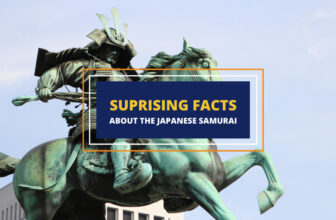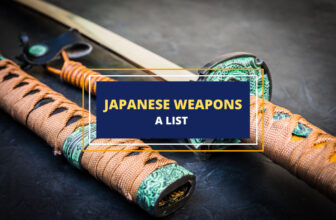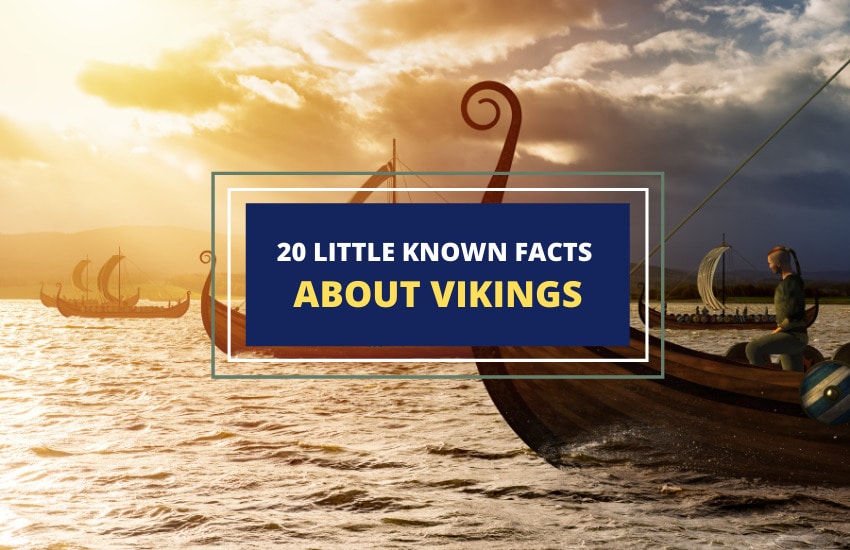
Table of Contents
Vikings are perhaps some of history’s most fascinating groups of people. It is not uncommon when reading about Vikings to come across articles that highlight their societies as being very violent, expansionist, focused on war, and looting. Although this is true to some extent, there are many more interesting facts about Vikings that are often overlooked and ignored.
This is why we’ve decided to give you an insightful list of the top 18 most interesting facts about Vikings and their societies, so keep reading to uncover some lesser-known details about these polarizing historical figures.
1- Vikings were known for their travels far away from Scandinavia.
Vikings were masterful explorers. They were especially active from the 8th century and developed a tradition of seafaring. The tradition started in Scandinavia, the area that we today call Norway, Denmark, and Sweden.
Although Vikings first set their sights on the closest areas known to them, like the British Isles, Estonia, parts of Russia, and the Baltics, they did not stop there. Traces of their presence in faraway places were also found, scattered from Ukraine to Constantinople, the Arabian Peninsula, Iran, North America, and even North Africa. These periods of extensive voyaging is known as the Viking age.
2- Vikings spoke Old Norse.
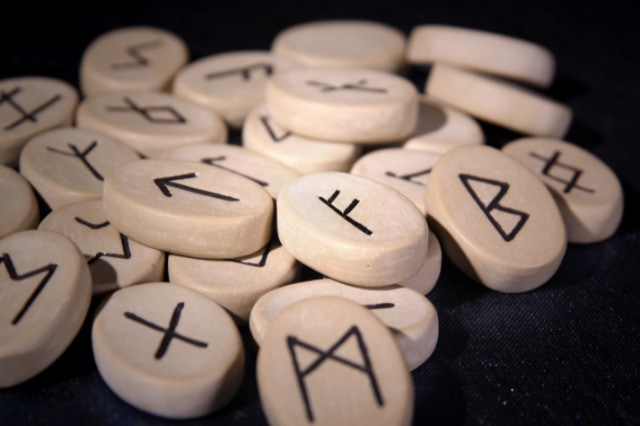
The languages that are spoken today in Iceland, Sweden, Norway, the Faroe Islands, and Denmark are known for their many similarities, but many people don’t know that these languages actually stem from a joint language that was spoken for a very long time, known as the Old Norse or Old Nordic.
The Old Norse was spoken from as early as the 7th century up to the 15th century. Although Old Norse is not used nowadays, it has left many traces on other Nordic languages.
The Vikings used this specific language as a lingua franca. Old Norse was written down in runes, but Vikings preferred to tell their tales orally instead of extensively writing them down, which is why over time, completely different accounts of historical events emerged in these areas.
Ancient runes were not that commonly used.
As we mentioned, Vikings took great care of their oral storytelling tradition and cultivated it extensively, despite having a very sophisticated written language. However, runes were usually reserved for ceremonial purposes, or to mark important landmarks, gravestones, property, and so on. The practice of writing became more popular when the alphabet was introduced by the Roman Catholic Church.
Runes possibly came from Italy or Greece.
Although the modern-day Scandinavian countries can pride themselves on some truly spectacular monuments depicting ancient Nordic runes, it is believed that these runes were actually borrowed from other languages and scripts.
For example, there is a high possibility that the runes were based on scripts that were developed in the Italian peninsula, but the furthest we can trace the origin of these runes is from Greece that influenced the development of the Etruscan alphabet in Italy.
We are not entirely sure how early Norsemen introduced these runes, but there is a hypothesis that the original groups that settled in Scandinavia were nomadic, and traveled upwards towards northern Germany and Denmark, carrying with them the runic script.
3- Vikings did not wear horned helmets.

It is truly almost impossible to imagine Vikings without their famous horned helmets, so it must come as a surprise to learn that they most likely never wore anything similar to a horned helmet.
Archaeologists and historians were never able to find any depictions of Vikings wearing horned helmets, and it is very likely that our modern-day depictions of horned Vikings actually come from 19th-century painters that tended to romanticize this headdress. Their inspiration might have come from the fact that horned helmets were worn in these areas in ancient times by priests for religious and ceremonial purposes, but not for war.
4- Viking burial ceremonies were very important to them.
Being mostly sailors, it comes as no surprise that Vikings were closely connected to water and possessed a great deal of respect and admiration for the high seas.
This is why they preferred to bury their dead in boats, believing that the boats would carry their deceased countrymen to Valhalla, a majestic realm that they believed awaited only the bravest amongst them.
Vikings did not hold back with their burial ceremonies and preferred to decorate the burial boats with an assortment of weapons, valuables, and even sacrificed slaves for the ceremonial boat burials.
5- Not all Vikings were sailors or raiders.
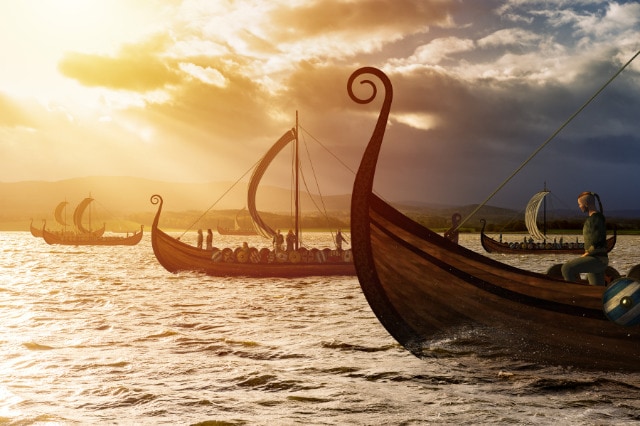
Another misconception about Vikings is that they were exclusively sailors, exploring different parts of the world, and raiding whatever they saw in their place. However, quite a significant number of Nordic people were attached to agriculture and farming, and spent most of their time working in fields, tending to their grain, like oats or barley.
Vikings also excelled at cattle farming, and it was very common for families to take care of sheep, goats, pigs, and different types of cattle on their farms. Agriculture and cattle farming was fundamental to bring in enough food for their families to survive the harsh weather climates of the area.
6- Vikings were never fully unified as people.
Another great misconception is that we tend to use the name Viking to attribute it to ancient Nordic people as a sort of a unifying force that apparently existed between the groups of people that inhabited Scandinavia.
This is only because historical simplifications led to everyone being labeled as a Viking or the entire population being considered as a unified nation. It is highly unlikely that Vikings even called themselves this way. They were scattered around the areas of modern-day Denmark, Norway, Faroes, Iceland, and Sweden, and found protection in many different tribes that were led by chieftains.
This is not something that pop culture bothered to represent correctly, so it might come as a surprise to find out that Vikings were actually often clashing and fighting amongst themselves as well.
7- The word Viking means “pirate raid”.
The word for Vikings comes from the Old Norse language that was spoken in ancient Scandinavia, meaning pirate raid. But, as we mentioned, not every Viking was an active pirate, or actively participated in piracy. Some preferred not to go to wars and turned towards a peaceful life dedicated to farming and family.
8- Vikings landed in America before Columbus.
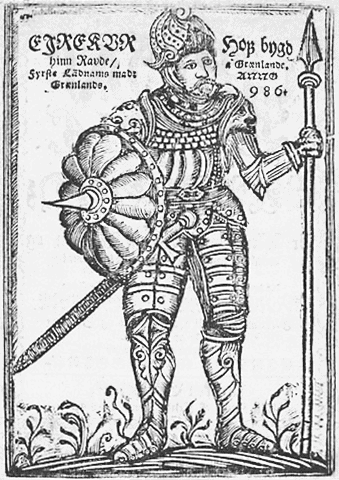
Christopher Columbus is still attributed as being the first westerner to set foot on American shores, however records show that Vikings visited North America long before him, beating him by around 500 years before he even set his sails towards the New World.
One of the Vikings who is attributed to achieving this is Leif Eriksson, a famous Viking explorer. Eriksson is often depicted in many Icelandic Sagas as a fearless voyager and adventurer.
9- Vikings had a huge impact on the names of the days in the week.
Read carefully and you might find some echoes of Nordic religion and Old Norse in the names of the days in the week. In the English language, Thursday is named after Thor, the Nordic God of Thunder, and a courageous warrior in Norse mythology. Thor is perhaps the most well-known Nordic deity and is usually depicted with a mighty hammer that only he could wield.
Wednesday is named after Odin, the chief god in the Nordic pantheon and the father of Thor, while Friday is named after Frigg, Odin’s wife, who symbolizes beauty and love in Norse mythology.
Even Saturday was named by the Norse people meaning, “the bathing day” or “the washing day” which was probably the day where Vikings were encouraged to pay more attention to their hygiene.
10- Vikings completely revolutionized shipbuilding.
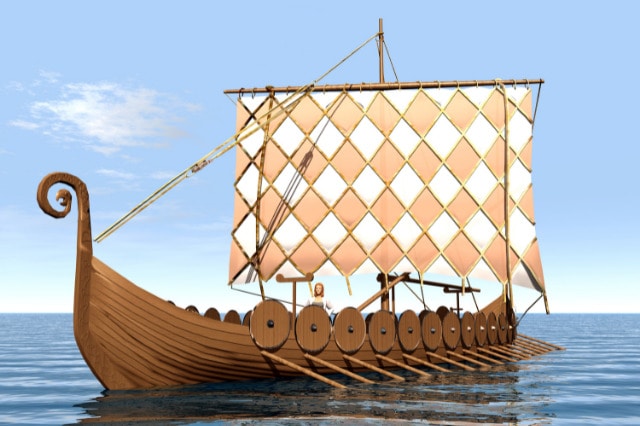
It is not surprising that Vikings were known for their shipbuilding skills, given that many of them were passionate seafarers and adventurers, and over the course of a few centuries, they managed to perfect the craft of shipbuilding.
The Vikings adapted their designs to the weather patterns and the climate of the areas that they used to live in. Over time, their signature ships called longships, started becoming a standard that was replicated, imported, and used by numerous cultures.
11- Vikings practiced slavery.
Vikings are known to have practiced slavery. The thralls, who were the people they had enslaved, were expected to perform everyday chores around the house or do manual labor whenever they required manpower for shipbuilding projects or anything that included construction.
There were two ways the Vikings participated in slavery:
- One way was by capturing and enslaving people from towns and villages they raided. They would then bring the captured people with them to Scandinavia and convert them into slaves.
- The other option was by participating in the slave trade. They were known to pay for enslaved people with silver or other valuables.
12- Christianity had a massive impact on the decline of Vikings.
By the year 1066, Vikings were already a fleeting group of people and their traditions started to become increasingly immersed and conjoined. Around this time, their last known king, King Harald, was killed in a battle at Stamford Bridge.
After these events, the interest in military expansion started to slowly decrease amongst the Nordic population, and many practices were outlawed by the incoming Christianity, one of which was taking Christians as slaves.
13- Vikings were avid storytellers.
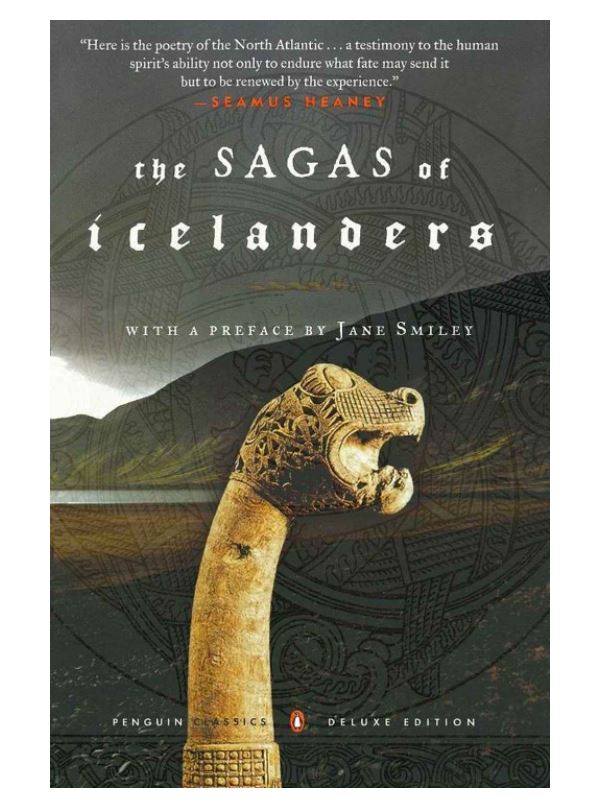
Despite having a highly developed language and a writing system that was rather convenient to use, the Vikings preferred to tell their stories orally and pass them down to the next generations. This is the reason why so many different accounts of the Viking experiences vary from place to place. However, they also did write down their stories in a form called a Saga.
Sagas were prevalent in Icelandic Viking traditions, and they consisted of large compilations and interpretations of historical events and descriptions of the society. Icelandic Sagas are perhaps the most well-known written accounts of the lives and traditions of the Nordic people in Iceland and Scandinavia. Despite being relatively true in depicting historical events, Icelandic Saga’s are also notable for romanticizing Viking history, so the accuracy of some of these stories is not entirely verified.
14- Vikings left a great mark on Scandinavian societies.
It is believed that up to 30% of the male population of Denmark, Norway, and Sweden probably descends from the Vikings. Around one in 33 men in Britain have some Viking ancestry.
Vikings were interested and present in the British Isles, and some of them ended up staying and settling in the region, causing this specific genetic mixture.
15- Vikings would earn some income from their victims.
It was not uncommon for the victims of Viking raids to offer them gold in exchange for being left alone. This practice started emerging between 9th to 11th century in England and France, where Viking presence became increasingly prevalent over time.
Vikings were known to charge their “non-violence” fees for many kingdoms which they threatened, and they often ended up earning large amounts of silver, gold, and other precious metals. Over time, this turned into an unwritten practice known as the Danegeld.
16- There are many debates on why Vikings went on raids.
On one side, it is believed that raids were partially a product of the fact that Vikings lived in rather harsh climates and environments, where for many, farming and cattle herding was not a viable option. Because of this, they partook in raiding as a form of survival in the Nordic regions.
Due to the large population in the Nordic regions, excess males tended to leave their homes to go for raids, so that balance could be maintained on their land.
In other cases, the reason to raid other regions was also because they wanted more women in their kingdom. Mostly, every man participated in polygamy, and having more than one wife or concubine was a custom for the Vikings. The women brought in as captives from other lands were used for marriage, and many others were made concubines and mistresses.
17- Viking societies were divided into three classes.
Viking societies were headed by Viking nobility called jarls who were usually part of the political elite that had vast lands and owned livestock. The Viking jarls oversaw the execution of political life in villages and cities and administered justice in their respective lands.
The middle class of the society was called karls and consisted of free people that owned land. They were considered the working-class that was the engine of the Viking societies. The lower section of society were the enslaved people called thralls, who were in charge of performing household chores and manual labor.
18- Vikings believed in the societal rise in rank.
Despite their practices utilizing the institution of slavery, it was possible to change one’s societal role and position within the group. Although it is still not entirely known how this would go on to happen, we know that it was possible for slaves to acquire some rights. It was also forbidden for an owner to murder their slave on a whim or for no reason.
Enslaved people could also become free members of society and own land of their own, similar to members of the middle class.
Wrapping Up
Vikings left a permanent mark on the world, with their culture and language, shipbuilding skills, and history that was sometimes peaceful, but more often than not, very violent and expansionist.
Vikings have been heavily romanticized, even in their own interpretation of history. However, most of the misconceptions that we encounter about Vikings these days actually began back in the 19th century, and the recent pop culture painted an entirely different picture about Vikings.
Vikings are truly some of the most fascinating and polarizing characters to appear on the complex stage of European history, and we hope you learned many interesting new facts about this group of people.





